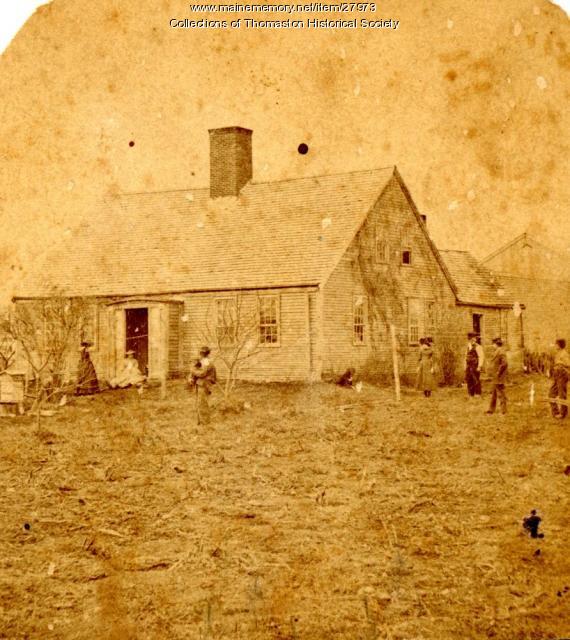Keywords: letter
Item 12011
Letter of Introduction, Bangor, 1828
Contributed by: Cary Library Date: 1828-04-28 Location: Houlton; Bangor Media: Paper
Item 18343
Portland letter carriers, December 1926
Contributed by: Maine Historical Society/MaineToday Media Date: 1926 Location: Portland Media: Glass Negative
Item 151132
Proposed Back Cove Recreation Park, Portland, 1935
Contributed by: Maine Historical Society
Date: 1935
Location: Portland
Client: Portland Public Development Commission
Architect: John Calvin Stevens John Howard Stevens Architects
This record contains 2 images.
Item 150978
Study for Eta Chapter of Theta Delta Chi at Bowdoin College, Brunswick, ca. 1904
Contributed by: Maine Historical Society Date: circa 1904 Location: Brunswick Client: Eta Chapter of Theta Delta Chi Fraternity Architect: Frederick A. Tompson
Exhibit
Young men and women in the 19th century often went away from home -- sometimes for a few months, sometimes for longer periods -- to attend academies, seminaries, or schools run by individuals. While there, they wrote letters home, reporting on boarding arrangements and coursework undertaken, and inquired about the family at home.
Exhibit
Meshach P. Larry: Civil War Letters
Meshach P. Larry, a Windham blacksmith, joined Maine's 17th Regiment Company H on August 18, 1862. Larry and his sister, Phebe, wrote to each other frequently during the Civil War, and his letters paint a vivid picture of the life of a soldier.
Site Page
Thomaston: The Town that Went to Sea - Emerson Letter
"Emerson Letter Emerson Fales, born October 11, 1834 lived in Thomaston Maine. He was a mason soldier of the 4th Me."
Site Page
Life on a Tidal River - Three Civil War Letters - Page 2 of 4
"Three Civil War Letters The souvenirs of war collected by Frederick Rogers. The Fourth Regiment would not see any action for the next seven…"
Story
The only letter to survive World War II
by Cyrene Slegona
Only one of many letters my father sent to his wife remained after he came home from World War II.
Story
USCG Boot Camp Experience, Vietnam War era
by Peter S. Morgan, Jr.
"Letters to the Wall" Memorial Day
Lesson Plan
Primary Sources: Healthcare History in Maine
Grade Level: 6-8, 9-12
Content Area: Social Studies
This lesson plan will give students the opportunity to read and analyze letters, literature, and other primary documents and articles of material culture from the MHS collections relating to how people in Maine have given and received healthcare throughout history. Students will discuss the giving and receiving of medicines and treatments from the 18th-21st centuries, the evolving role of hospitals since the 19th century, and how the nursing profession has changed since the Civil War. Students will also look at how people and healthcare facilities in Maine have addressed epidemics in the past, such as influenza and tuberculosis, and what we can learn today from studying the history of healthcare and medicine.
Lesson Plan
Maine Statehood and the Missouri Compromise
Grade Level: 9-12
Content Area: Social Studies
Using primary sources, students will explore the arguments for and against Maine statehood and the Missouri Compromise, and the far-reaching implications of Maine statehood and the Missouri Compromise such as the preservation and spread of slavery in the United States. Students will gather evidence and arguments to debate the statement: The Missouri Compromise was deeply flawed and ultimately did more harm to the Union than good.


















